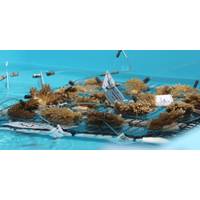
The Heroic Effort to Save Florida’s Coral Reef from Devastating Ocean Heat
feed on plankton, providing nutrients for their algae. The result of this symbiotic relationship is the coral’s ability to build a calcium carbonate skeleton and reefs that support nearly 25% of all marine life.Unfortunately, corals are very temperature sensitive, and the extreme ocean heat off South Florida, with some reef areas reaching temperatures in the 90s, has put them under extraordinary stress.When corals get too hot, they expel their symbiotic algae. The corals appear white – bleached – because their carbonate skeleton shows through their clear tissue that lack any colorful
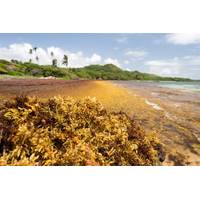
Massive Bloom of Brown Seaweed Heads Toward Florida and the Caribbean
Ocean, 2023 could produce the largest bloom ever recorded. That’s bad news for destinations like Miami and Fort Lauderdale that will struggle to clean their shorelines. In 2022, Miami-Dade County spent US$6 million to clear sargassum from just four popular beaches.Sargassum isn’t new on South Florida beaches, but its rapid increase over the past decade indicates that some new factor – likely related to human actions – is affecting when and how it forms.In my work as a coastal scientist, I’ve watched these invasions become the new normal, choking beaches and turning clear
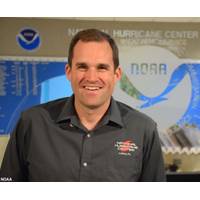
Brennan Named Director of NOAA’s National Hurricane Center
efficiency by issuing the best watches, warnings, forecasts and analyses of hazardous tropical weather and by increasing understanding of these hazards, enabling communities to be safe from tropical weather threats. The National Hurricane Center is co-located with the National Weather Service Miami-South Florida forecast office on the campus of Florida International University
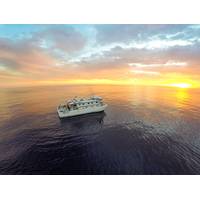
MBARI to Transfer Research Vessel to Florida Institute of Oceanography
MBARI revealed plans to grant its 25-year-old research vessel Western Flyer to the University of South Florida where the vessel will begin a new life as a sailing classroom for the university's Florida Institute of Oceanography (FIO).“We’re thrilled the Western Flyer will be sailing on to an exciting new chapter at the Florida Institute of Oceanography,” said MBARI President and CEO Chris Scholin. “The ocean plays a vital role in sustaining life on Earth. With the Western Flyer, the Florida Institute of Oceanography can inspire new ocean explorers who will help us better

RDSEA "Pic of the Week"
Combined efforts, University of South Florida's College of Marine Science; Ocean Circulation Laboratory, and the Center of Ocean Technologies (COT), bring back to life a Met-Ocean site on USF's "Coastal Ocean Monitoring and Prediction System" (COMPS), West Florida Shelf (WFS), eastern Gulf of Mexico, the initial/original coastal monitoring system in the U.S.:
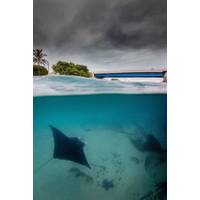
Discovery: Uncovering Manta Ray Behavior via Mini ADCP
unusual shallow-water coastal habitats with simplicity and ease.Powerful yet graceful, manta rays top almost everyone’s list of must-see marine animals. While people flock to places like Indonesia or the Maldives to watch these gentle giants, one location has gone relatively unnoticed – South Florida.“I lived in Florida working as a sea turtle biologist, and a lot of data collection involved being on the beach all day,” said Jessica Pate, a marine biologist with the Marine Megafauna Foundation. “Sometimes I would notice these big, black shapes swimming right next to shore
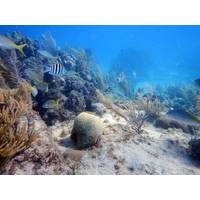
NOAA Strategy Addresses Stony Coral Tissue Loss Disease
., assistant secretary of commerce for oceans and atmosphere and deputy NOAA administrator. “The disease is unlike any witnessed before, but NOAA is leading the charge to protect these resources and the communities that depend on them.”Stony coral tissue loss disease was first observed in south Florida in 2014. As of November 2020, it spread to 15 other Caribbean countries and territories. The outbreak is unique due to its large geographic range, extended duration, rapid progression, high rates of mortality and the number of coral species affected. Once infected, coral colonies typically die

Ocean Influencer: Dr. Jyotika Virmani, Schmidt Ocean Institute
, Virmani was given the chance to take a few marine science courses and she noted, “That’s when it really clicked, that the weather and climate is this interconnected system, which includes atmosphere and ocean.” Her subsequent PhD was in physical oceanography at the University of South Florida, where she lived and worked with the Florida Coastal Ocean Observing System Consortium during the notorious 2004-2005 Atlantic hurricane season. It was here her career became one of adversity. Environmental adversity, that is.Shortly after Virmani moved back to England to take a job with the

Schmidt Appoints Virmani as Executive Director
;s national weather service.She has a bachelor’s degree in physics from Imperial College London, a master’s degree in atmospheric and marine environmental science from the State University of New York (SUNY) at Stony Brook and a doctorate in physical oceanography from the University of South Florida.Virmani will join the institute at the end of February and will be based in Los Angeles. “I am delighted and honored to be joining the Schmidt Ocean Institute and am excited to work with its dedicated and enthusiastic team,” Virmani said. “The next decade will be an astonishing


 February 2024
February 2024





